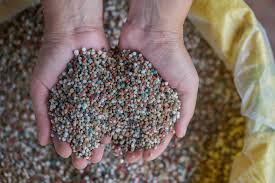
Dec . 13, 2024 04:27 Back to list
Optimal Water Soluble Fertilizer with High Quality Nutrients for Enhanced Plant Growth
The Benefits and Uses of High Quality Water Soluble Fertilizer
In the modern world of agriculture and horticulture, the pursuit of higher yields and healthy plants has led to the development of various fertilization techniques. Among these, high-quality water soluble fertilizers have gained prominence due to their efficiency and versatility. These fertilizers play a critical role in ensuring that plants receive the essential nutrients they need in a readily available form. This article delves into the benefits, composition, and application of high-quality water soluble fertilizers, particularly with a focus on a 30-10-10 formulation.
Understanding Water Soluble Fertilizers
Water soluble fertilizers are compounds that dissolve in water, releasing nutrients that plants can easily absorb through their roots. Unlike traditional granular fertilizers, which may take time to decompose in the soil, water soluble options offer a rapid release of nutrients. This is particularly advantageous in environments where quick nutrient uptake is crucial for plant growth, such as in hydroponic systems, greenhouses, and intensive cropping systems.
Composition of a 30-10-10 Fertilizer
The numbers in the fertilizer formulation—30-10-10—represent the percentages of nitrogen (N), phosphorus (P), and potassium (K), respectively.
1. Nitrogen (30%) This is essential for vegetative growth. It promotes the development of leafy, green foliage, which is critical for photosynthesis. High nitrogen levels are particularly beneficial for crops like lettuce, spinach, and other leafy greens. 2. Phosphorus (10%) Phosphorus is vital for root development, flower formation, and fruiting. Although the percentage is lower than nitrogen, it plays a crucial role during certain growth stages, especially in the flowering and fruiting phases of plants. 3. Potassium (10%) Potassium aids in overall plant function, including photosynthesis, water regulation, and resistance to diseases. It helps strengthen plants and improves the quality of fruits and vegetables.
Advantages of High-Quality Formulations
1. Fast Nutrient Availability The primary advantage of a high-quality water soluble fertilizer like 30-10-10 is its immediate availability to plants. As soon as it is applied, the nutrients are dissolved and ready for uptake, leading to quick results in plant growth.
2. Precision in Application Because these fertilizers are soluble, they can be mixed into irrigation systems or applied as foliar sprays. This allows for precise control over nutrient delivery, which can be adjusted based on the specific needs of the plants at different growth stages.
high quality 30 10 10 water soluble fertilizer

3. Enhanced Growth and Yield With a balanced supply of nitrogen, phosphorus, and potassium, plants can achieve better growth rates and increased yields. This is especially critical in high-value crops where maximizing production can significantly affect profitability.
4. Reduced Risk of Nutrient Lock-Up In traditional fertilizers, certain environmental conditions can lead to nutrient lock-up, where plants are unable to access essential nutrients due to chemical reactions in the soil. Water soluble fertilizers minimize this risk as the nutrients are immediately available in solution.
Application Tips for Optimal Results
1. Dilution Rates Always adhere to the recommended dilution rates provided by the manufacturer. Over-concentration can lead to nutrient burn and damage to plants.
2. Timing Apply water soluble fertilizers at different growth stages—higher nitrogen content during vegetative growth, and more balanced formulations during flowering and fruiting phases.
3. Soil Testing Before application, conduct soil tests to determine existing nutrient levels. This helps identify deficiencies and avoid over-fertilization, which can harm the ecosystem.
4. Compatibility Ensure that the water soluble fertilizer is compatible with other fertilizers or pesticides you may be using to avoid adverse reactions.
Conclusion
High-quality water soluble fertilizers, particularly those with a balanced composition like 30-10-10, offer a multitude of benefits for modern farming and gardening. With their rapid nutrient availability, precision application methods, and potential for boosting productivity, they represent an essential tool for any grower looking to optimize plant health and yield. As agriculture continues to evolve, embracing innovative solutions such as these will be indispensable for sustainable production practices.
-
10 10 10 Fertilizer Organic—Balanced NPK for All Plants
NewsJul.30,2025
-
Premium 10 10 10 Fertilizer Organic for Balanced Plant Growth
NewsJul.29,2025
-
Premium 10 10 10 Fertilizer Organic for Balanced Plant Growth
NewsJul.29,2025
-
Premium 10 10 10 Fertilizer Organic for Balanced Plant Growth
NewsJul.29,2025
-
50 Pound Bags of 13-13-13 Fertilizer for All Plants – Bulk & Organic Options
NewsJul.28,2025
-
High-Efficiency 15-30-15 Granular Fertilizer for Healthy Crops
NewsJul.28,2025
